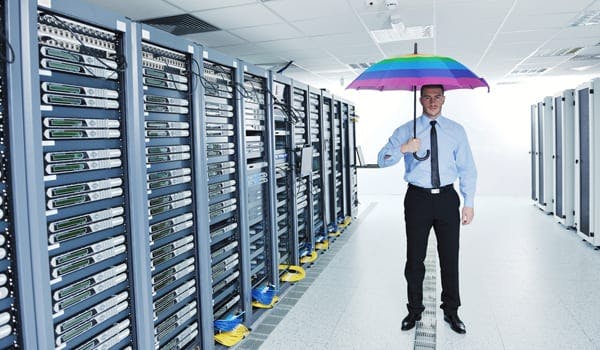While big business is all over its back-up and redundancy strategies, SMEs are all too often, not giving full consideration to what could happen should disaster strike.
The spate of natural disasters, including the Brisbane floods, hit many businesses hard. While some had no back-up strategy at all, others had their back-up equipment and data stored in building basements that were the first to be taken out in the serious floods.
The impact of disasters on an SME’s business can be devastating. Customer orders, contact information, financial records, supplier contracts, correspondence and emails, stock records – what would you do if you lost it all?
Businesses without disaster recovery facilities need to be aware of the consequences should the unexpected happen and they lose their vital information and means of communications. Unfortunately, it’s only when they have a disaster that they give due consideration to outsourcing their systems, such as when the air conditioning goes out on a weekend, power goes down due to a storm, or worse.
If there is no additional air conditioning backup, machines will fry. Hard drives do crash, and they do lose data. It’s a bit like insuring a car. You don’t really think about it until you have a crash.
A couple of years ago, a well-known fresh food supplier had a fire rip through its hub, destroying its proprietary IT system which essentially ran the entire business from data storage to business intelligence, sales management, stock and its financial and accounting system. It took three months to get the business back to normal operations once new equipment and software had been put in place.
SMEs don’t really think about this. IT managers in SMEs have a lot on their plate these days. They are managing CRM, WAN, telephone, back-up, dealing with mobility, and adapting to new technologies. So it’s not surprising they probably haven’t thought about the impact to the business if the IT system went down.
SMEs who own and manage their own IT facilities need to be planning for a number of things: have they got an uninterrupted power supply; are the back-up capabilities sufficient; are the cooling systems within the building adequate to support the IT systems, and is there back-up air conditioning in the event of a cooling problem.
When you manage your own IT infrastructure, you need to worry about this and it adds another layer of complexity that business shouldn’t need to worry about.
A solution is putting your IT infrastructure in a safe, secure environment. Purpose-built, enterprise grad data centres offer a number of benefits business who are running mission-critical IT systems. These include 24/7 “smart hands”, redundant power, physical security, ability to easily scale-up infrastructure, reduced costs and greater flexibility, improved utilization of leased premise. And less worry.
7 tips for SMEs managing IT infrastructure
1. Have a back-up plan
Considering the IT systems you run in house now, what would happen if one of them fell over or worse, if they all fell over? What would be the consequences of losing the data that sits on those systems? Calculating the cost to your business of an IT disaster is an exercise that is well worth doing.
2. Power can be expensive
A lot of power capacity can be expensive to deploy to a standard office building. Find out if there any limitations on power that can be delivered to your building as this could be critical to your growth path.
3. UPS is critical
Ensure you have the correctly sized UPS for your IT equipment to allow for an orderly shut-down of IT equipment in the event of a prolonged power outage. In the event of primary power failure – could you get someone on site 24×7 before your backup UPS is exhausted?
4. Don’t risk cooking your equipment
Work out what cooling requirements you will need not just for your current technology infrastructure, but critically, for projected future requirements. Some IT infrastructure produces a lot more heat than others.
Hot IT equipment reduces IT efficiency as CPU clock speeds reduce, which increases power-draw as fans turn on. This can eventually lead to the shutting down of your IT equipment if the temperature gets too high.
5. Physical security
Ensure you have the correct security posture appropriate to your requirements as well as your clients. For example, having your company comply with security systems such as PCI DSS and ISO27001 could be important to your clients.
Physical security can mean having audit logs of all access to your infrastructure, CCTV footage stored and a granular access control system to ensure only authorised members of staff can access certain area. Remember, sabotage can come from within.
6. Property Leasing
Check whether your on-premise IT equipment will not affect future negotiations with your landlord. If you have made a sizable investment in infrastructure in your building, it can sometimes hinder future negotiations for leasing rates as landlords know how expensive it is to move a large amount of IT equipment.
7. Consider outsourcing your Infrastructure
As soon as your reliance on your IT infrastructure becomes mission critical, you’ve got a problem. Relocating your IT assets into a data centre environment makes sense, both from a redundancy and back-up perspective, but also from a financial perspective.

